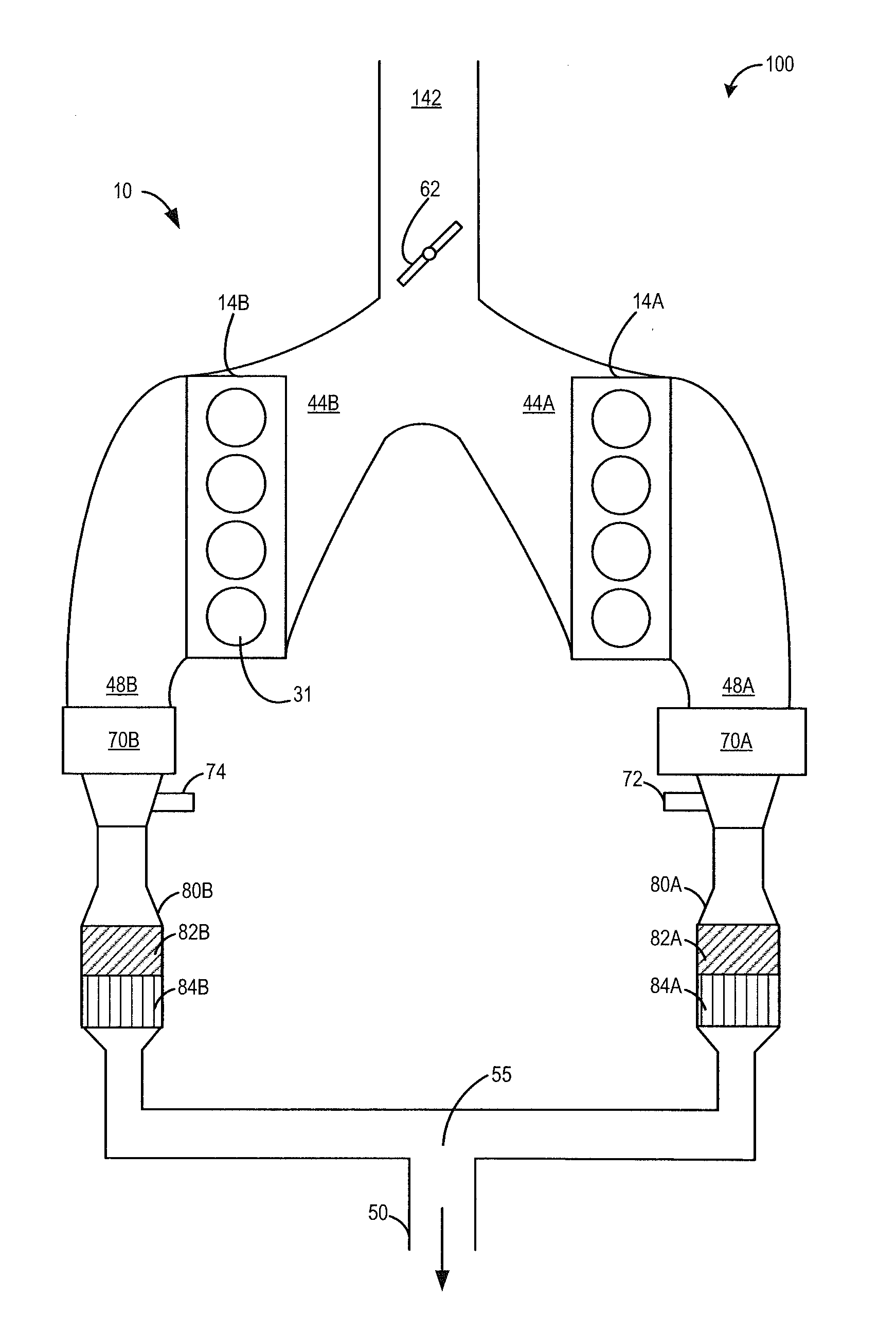Methods and systems for humidity detection via an exhaust gas sensor
a technology of humidity measurement and exhaust gas, which is applied in the direction of mechanical equipment, machines/engines, electrical control, etc., can solve the problems of affecting the humidity measurement, affecting the efficiency of the engine, and consuming a large amount of pcv, so as to reduce the impact of pcv on humidity estimation, reduce the loss of pumping, and improve engine efficiency
- Summary
- Abstract
- Description
- Claims
- Application Information
AI Technical Summary
Benefits of technology
Problems solved by technology
Method used
Image
Examples
Embodiment Construction
[0014]Methods and systems are provided for estimating humidity in an inactive bank of a variable displacement engine (VDE), such as the engine of FIGS. 1-2. During a VDE mode of engine operation, an exhaust gas oxygen sensor, such as the sensor of FIG. 3, coupled downstream of an inactive engine bank may be used for humidity detection while an exhaust gas oxygen sensor coupled downstream of the active bank is used for air-fuel ratio and fuel ethanol content estimation. A controller may be configured to perform a routine, such as the routine of FIGS. 4-5, to modulate an exhaust gas oxygen sensor coupled to an inactive engine bank during a VDE mode of engine operation to estimate ambient humidity, while modulating an exhaust gas oxygen sensor coupled to the active engine bank to estimate burned fuel alcohol (e.g., ethanol) content and measure an exhaust air-fuel ratio. Engine operating parameters of the active bank during the VDE mode of operation, as well as of both banks during a su...
PUM
 Login to View More
Login to View More Abstract
Description
Claims
Application Information
 Login to View More
Login to View More - R&D
- Intellectual Property
- Life Sciences
- Materials
- Tech Scout
- Unparalleled Data Quality
- Higher Quality Content
- 60% Fewer Hallucinations
Browse by: Latest US Patents, China's latest patents, Technical Efficacy Thesaurus, Application Domain, Technology Topic, Popular Technical Reports.
© 2025 PatSnap. All rights reserved.Legal|Privacy policy|Modern Slavery Act Transparency Statement|Sitemap|About US| Contact US: help@patsnap.com



